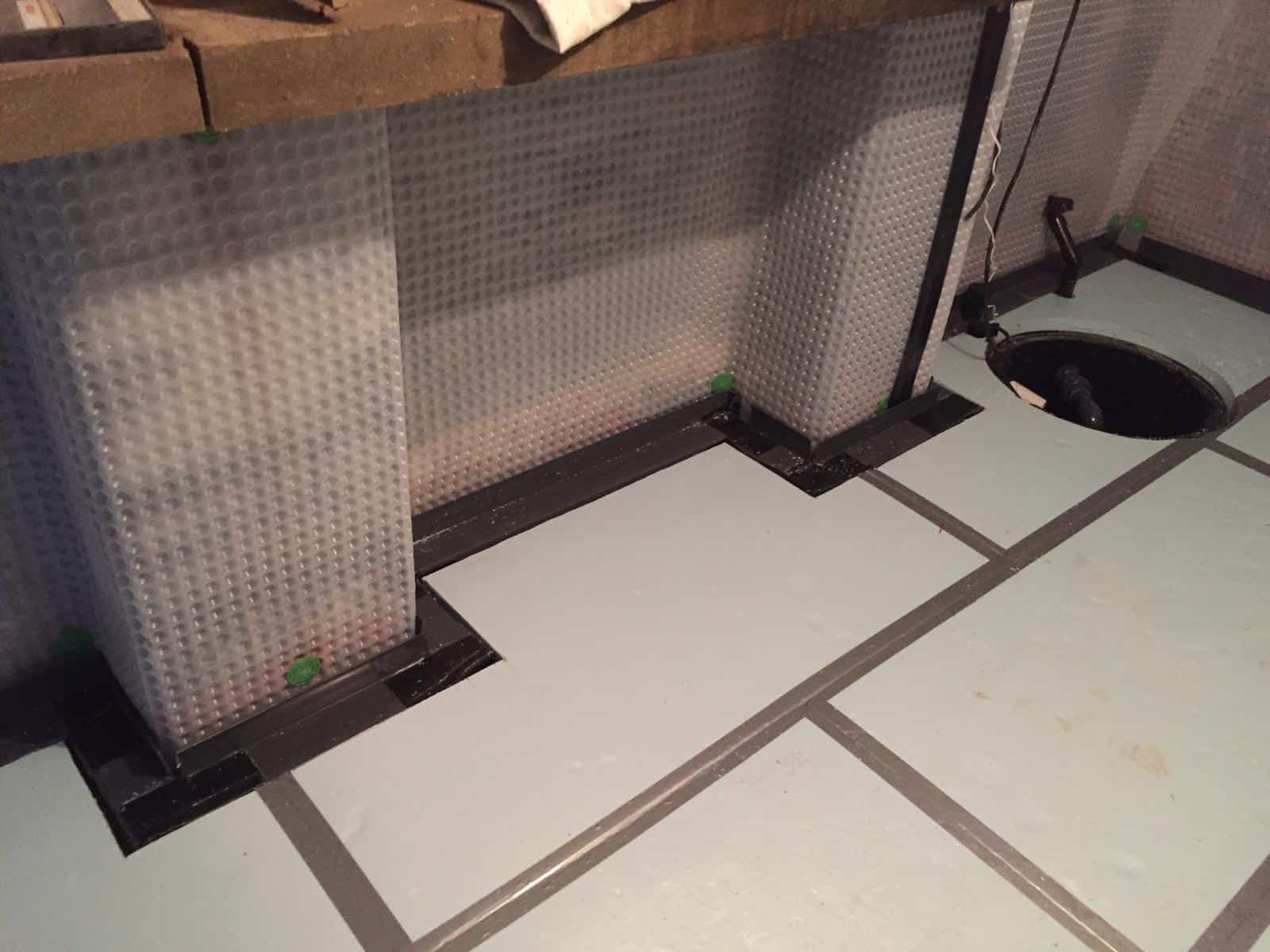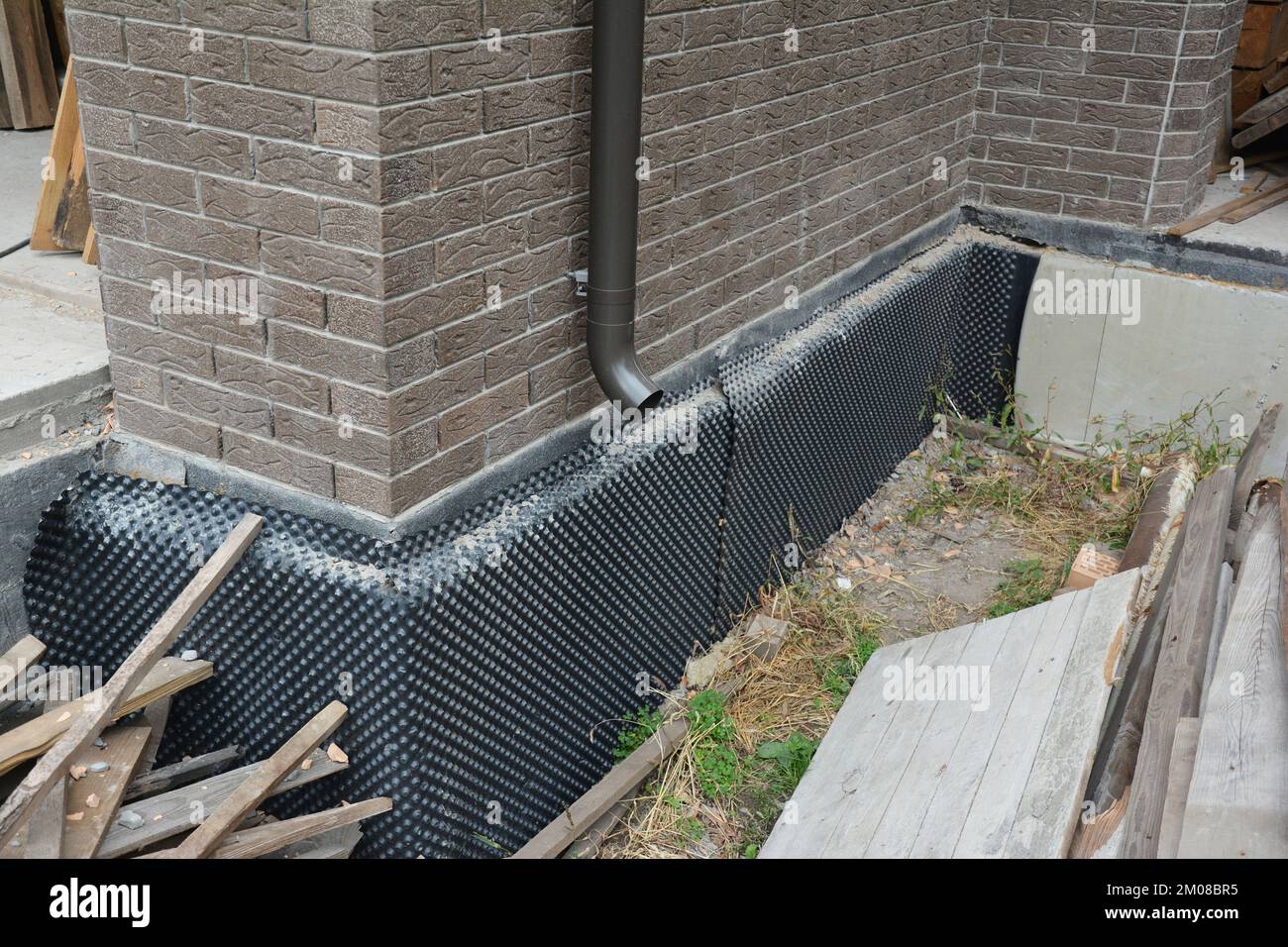The ultimate guide to mould treatment newcastle: Process from start to finish
Comprehending the Significance of Damp Proofing in Stopping Structural Damage
Wet proofing works as a vital defense versus moisture seepage in structures. This safety step can prevent considerable architectural damage, yet several homeowner continue to be not aware of its importance. Recognizing the indicators of dampness and recognizing the numerous solutions readily available can be imperative. Nevertheless, neglecting moist proofing can cause severe repercussions. What are the certain risks and solutions that property proprietors should consider?
What Perspires Proofing and Exactly How Does It Work?
Damp proofing functions as a necessary barrier versus moisture breach in buildings. damp removal newcastle. This process entails applying certain materials and strategies to stop water from penetrating wall surfaces, floorings, and other architectural elements. Usually, moist proofing can be achieved through the installation of damp evidence membranes, coverings, or the use of specialized sealants.These approaches work by producing a safety layer that prevents moisture movement, ensuring that the indoor atmosphere stays dry and healthy and balanced. Damp proofing is particularly crucial in areas susceptible to high humidity or groundwater, as it aids preserve the stability of the structure over time.Moreover, effective moist proofing adds to energy performance by stopping warm loss linked with wet atmospheres. By resolving potential wetness issues prior to they intensify, damp proofing functions as a proactive step in guarding buildings from the damaging effects of water damage, eventually extending their life expectancy and keeping their worth
Typical Indications of Moisture in a Structure
Wetness issues within a building can materialize with a number of obvious signs that show the existence of dampness. One prominent sign is the look of water stains on ceilings or walls, which commonly suggests wetness infiltration. Additionally, gurgling or peeling off paint can recommend that excess moisture is entraped below the surface area, causing degeneration. An additional typical indication is the existence of mold and mold, which flourish in wet problems and can often be identified by their stuffy smell. Moreover, a rise in humidity levels can cause condensation on windows and various other surface areas, highlighting dampness troubles. Ultimately, unequal or distorted flooring may signify underlying moisture that compromises structural integrity. Acknowledging these signs early can help reduce potential damages and keep a safe living setting. Regular examinations and punctual activity are crucial in resolving dampness problems before they escalate.
The Dangers of Neglecting Damp Proofing
Ignoring moist proofing can lead to significant risks to a structure's architectural honesty, as moisture buildup may compromise walls and foundations. In addition, extended dampness creates an atmosphere favorable to mold growth, positioning severe carcinogen to occupants. Dealing with these risks is crucial for making certain both safety and security and durability of the residential property.
Structural Integrity Risks
When house owners ignore the value of efficient wet proofing, they reveal their residential or commercial properties to substantial architectural honesty hazards. Prolonged wetness infiltration can lead to the advancement of mold and mildew, which compromises foundational elements and can endanger general security. Furthermore, excess dampness can wear down concrete and brickwork, resulting in fractures and structural failures. Wood components are particularly susceptible; they can rot and lose load-bearing capacity, posturing major risks to the structure's framework. Without treatment moist problems may draw in pests, such as termites, which better aggravate architectural deterioration. Ultimately, overlooking moist proofing steps can bring about costly repair services and potential safety and security hazards, underscoring the essential role of proactive damp administration in preserving the integrity of homes.
Carcinogen Concerns
Exactly how can an apparently minor oversight bring about significant wellness dangers? Neglecting wet proofing can produce an environment conducive to mold development, which postures considerable health risks. Mold and mildew spores can activate allergic responses, breathing issues, and other health complications, particularly in vulnerable populations such as children, the senior, and people with pre-existing conditions. Additionally, consistent moisture can attract parasites like bugs and rats, which lug conditions that even more jeopardize health. The existence of dampness also adds to a decline in indoor air top quality, aggravating asthma and various other respiratory system ailments. As a result, the failure to attend to damp concerns not only intimidates architectural stability yet additionally endangers the well-being of passengers, highlighting the vital requirement for reliable damp proofing procedures.
Different Kinds Of Damp Proofing Solutions
Different factors can contribute to damp issues in buildings, choosing the ideal moist proofing solution is necessary for protecting architectural stability. Several options are offered, each customized to specific conditions.One typical option is a damp-proof membrane (DPM), typically made from polyethylene or bitumen, which is installed in wall surfaces and floors to stop dampness ingress. An additional choice is damp-proof training courses (DPC), which are layers of water resistant material put within walls to obstruct climbing damp.Chemical damp proofing includes infusing waterproofing chemicals right into wall surfaces to create a barrier versus wetness. In addition, outside therapies such as tanking, which entails applying a water resistant layer to the outside of structures, can be reliable in stopping water penetration.Each remedy has its advantages and is chosen based upon the building's here particular concerns, ecological problems, and lasting upkeep factors to consider, guaranteeing optimal protection against damp-related damages.

The Expense of Damp Damages vs. Prevention
Comprehending the monetary implications of moist damage contrasted to prevention highlights the relevance of positive actions. The expenses linked with moist damage can be considerable, including repair services to architectural components, mold and mildew remediation, and possible health-related costs. House owners might deal with significant financial pressure if considerable damage happens, bring about increased insurance policy costs and shed residential or commercial property value.In comparison, spending in moist proofing options is typically much more economical. Initial expenses for avoidance techniques, such as improving or mounting damp-proof membrane layers drain systems, are commonly surpassed by the long-term savings from staying clear of costly repair services. Furthermore, avoiding damp problems can boost a property's overall value and appeal, making it a wise financial investment. When examining the expense of wet damages versus prevention, it comes to be clear that taking proactive actions can secure economic interests and maintain the stability of the property in time.
Choosing the Right Damp Proofing Technique for Your Building
Which moist proofing method is most suitable for a specific residential property frequently relies on various aspects, including the structure's age, existing wetness concerns, and regional environmental problems. For older frameworks, conventional techniques such as asphalt membrane layers or cementitious layers might be more efficient, as they can supply a durable barrier against climbing damp. On the other hand, more recent structures may take advantage of modern solutions like infused damp-proof training courses, which are less invasive and can be customized to certain moisture challenges.Additionally, buildings in locations with high water tables or hefty rains may call for more advanced techniques, such as dental caries wall surface water drainage systems or exterior waterproofing. Home owners ought to additionally think about the specific products made use of in their building's construction, as some techniques might not be compatible. Inevitably, an extensive evaluation by a specialist can lead homeowner in selecting one of the most effective damp proofing technique tailored to their special conditions.
Preserving Your Damp Proofing System Over Time
Routine maintenance of a damp proofing system is necessary for guaranteeing its lasting performance and safeguarding a home from moisture-related damage. Building owners should perform routine examinations to recognize any kind of signs of wear or concession in the damp proofing layer. This consists of monitoring for splits, peeling paint, or mold development, which might suggest dampness intrusion.Additionally, it is suggested to clean gutters and downspouts consistently to stop water accumulation around the structure. Reapplying sealants or membranes may be required if deterioration is observed.Engaging expert services for routine assessments can better improve the toughness of the system. These experts can provide understandings into potential susceptabilities and suggest prompt repair work.
Regularly Asked Inquiries
Exactly How Lengthy Does Damp Proofing Treatment Last Prior To Requiring Repair Work?
The long life of wet proofing treatment normally ranges from 10 to three decades, relying on variables such as the method used, environmental conditions, and upkeep methods. Regular examinations can assist identify when fixings may be essential.
Is Do It Yourself Damp Proofing Effective Compared to Expert Solutions?
The performance of do it yourself damp proofing differs considerably. damp removal newcastle. While some individuals may achieve adequate results, specialist services generally ensure comprehensive remedies, leveraging competence and top quality materials to protect against future concerns a lot more dependably than most do it yourself attempts
Can Damp Proofing Improve Indoor Air Quality?
The inquiry of whether moist proofing can improve interior air top quality occurs often. Effective wet proofing minimizes dampness levels, therefore reducing mold development and allergens, ultimately adding to a much healthier interior setting for occupants.
Exist Specific Rules for Damp Proofing in Different Areas?
Rules for damp proofing differ by area, typically affected by regional structure codes and environmental conditions. Conformity guarantees reliable dampness control, safeguarding frameworks and advertising security, which highlights the requirement for adherence to these particular policies.

What Are the Long-Term Advantages of Appropriate Damp Proofing?
The lasting benefits of correct damp proofing include boosted structural stability, reduced maintenance costs, improved interior air quality, and increased home worth. These advantages add to a much healthier living setting and long term life expectancy of buildings. Typically, wet proofing can be accomplished through the installment of moist evidence membrane layers, coatings, or the usage of specialized sealants.These approaches work by developing a safety layer that inhibits moisture motion, guaranteeing that the indoor environment continues to be healthy and completely dry. Moist proofing is especially crucial in locations susceptible to high moisture or groundwater, as it helps preserve the stability of the framework over time.Moreover, effective wet proofing adds to energy effectiveness by avoiding warmth loss linked with moist atmospheres. Neglecting wet proofing can lead to considerable threats to a structure's architectural stability, as moisture buildup may weaken structures and wall surfaces (damp proofing newcastle). Numerous elements can add to damp problems in buildings, picking the suitable damp proofing solution is necessary for maintaining architectural honesty. Which damp proofing approach is most suitable for a certain residential or commercial property commonly depends on various variables, consisting of the building's age, existing moisture problems, and local ecological conditions